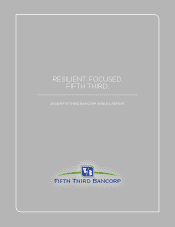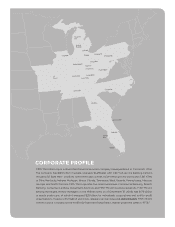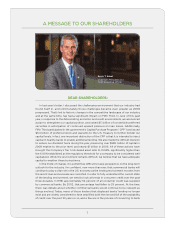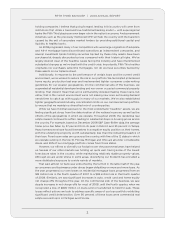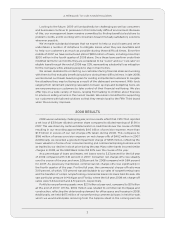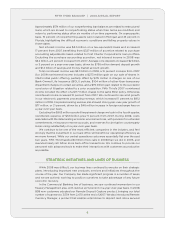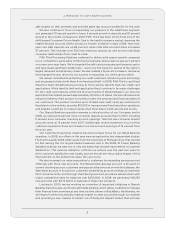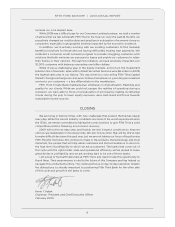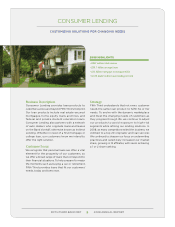Fifth Third Bank 2008 Annual Report Download - page 4
Download and view the complete annual report
Please find page 4 of the 2008 Fifth Third Bank annual report below. You can navigate through the pages in the report by either clicking on the pages listed below, or by using the keyword search tool below to find specific information within the annual report.
2
fifth thirD bancorp | 2008 annual report
holding companies. I believe that going forward, lending in this country will come from
institutions that utilize a tried and true traditional banking model — with superregional
banks like Fifth Third playing an even larger role in the nation’s economy. And government
initiatives, such as the previously mentioned CPP, will help the country with the transition
caused by the exit of secondary market lenders by providing additional capital and
liquidity to healthy banks.
As 2008 progressed, many of our competitors who were large originators of subprime
and Alt-A mortgage loans discontinued operations as independent companies, and
several investment banks holding securities backed by these risky assets have been
purchased at deeply discounted prices compared with their historical highs. We’ve
largely steered clear of the headline issues facing the industry and have implemented
substantial changes as we’ve dealt with the credit crisis. Importantly, Fifth Third neither
originates nor purchases subprime mortgages, nor do we have securities backed by
these assets on our balance sheet.
Additionally, in response to the performance of certain loans and the current credit
environment, we’ve worked to reduce the risk in our portfolio. We terminated all brokered
home equity production last year and implemented tighter consumer underwriting
guidelines for our weaker geographies. On the commercial side of the business, we
suspended all residential developer lending and non-owner occupied commercial property
lending. That doesn’t mean that we’ve permanently stopped making these loans, but
rather, that in the current environment we’re not making new ones, as housing demand
needs time to catch up with supply in many of our markets. We’ve also established
tighter geographical and industry concentration limits on our commercial loan portfolio
to ensure that we maintain a diversied mix of counterparties.
While we have minimal exposure to the most problematic “headline” assets, we are
feeling signicant stress from the deterioration of the national economy as well as the
effects of the geographies in which we operate. Throughout 2008, the residential real
estate market continued to soften, leading to substantial drops in housing prices across
the country. For example, based on December 2008 S&P Case-Shiller data, the average
home price has fallen by 37 percent from its peak in Detroit, and 35 percent in Tampa.
Many homeowners have found themselves in a negative equity position on their homes,
with the underlying property worth substantially less than the remaining balance of
their loan. Foreclosure rates are up across the country, with ve of the 12 states in which
we operate ranking in the top 10. Florida, Michigan and Ohio are all under considerable
stress, and 65% of our mortgage portfolio comes from those states.
However, our efforts to diversify our footprint over the past several years have helped
us. Several of our other markets are holding up quite well, having some of the lowest
foreclosure rates in the country, while maintaining relatively stable property values.
Although we are under stress in some areas, diversifying our footprint has provided a
more distributed exposure to a wide variety of markets.
That said, almost no bank was untouched by the turmoil in the latter half of the year,
as consumers and businesses under stress began defaulting on more and more loans. As
the year progressed, our own losses on residential mortgage loans progressed from an
$18 million loss in the fourth quarter of 2007 to a $68 million loss in the fourth quarter
of 2008. Similarly, we saw signicant increases in auto, credit card and home equity
net charge-offs throughout the year. On the commercial side of the business, we saw
steady increases in net charge-offs for most of 2008, until the fourth quarter, when we
recognized a loss of $800 million on loans sold or transferred to held-for-sale. These
losses reect actions we took to address specic areas of our loan portfolio exhibiting
signicant credit deterioration. Over 90 percent of these loans were commercial real
estate secured loans in Michigan and Florida.

